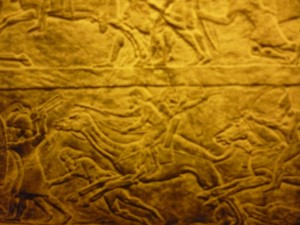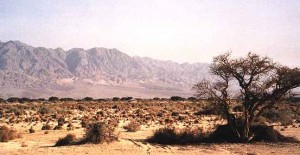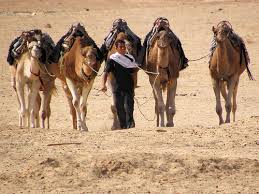Radio-carbon dating of camel bones discovered in the Arava Valley has challenged Biblical accuracy, that is, according to reports based on an article published in Tel Aviv the journal of Tel Aviv University‘s Department of Archaeology and Near Eastern Cultures. In recent weeks, this has, as might be expected, attracted media attention.
The claim is also made that this anachronism is direct proof that the texts were compiled perhaps centuries after the events described..
Camels are described in the early Hebrew Scripture (Old Testament) stories of Abraham, Joseph, Jacob and Job (Gen.12:16, 24:10, 37:25-28, Job 1:3, 42:12) as symbols of wealth and as pack animals, generally thought to be Arabian camels (Camelus dromedarius). The domestication of camels encouraged trade between the patriarchs of Abraham’s time and regions previously only reachable on foot, or by donkeys or mules. Some suggest that later writers assumed the beasts were camels but were really donkeys. Is it fair to believe the writers were insensible to or ignorant of the difference? Internal scriptural references to many different animals suggests otherwise.
The findings have been interpreted in the study that camels were most likely domesticated around 900 BCE – centuries after the biblical stories are recorded to have taken place.

“The introduction of the camel to our region was a very important economic and social development,” researcher Dr.Erez Ben-Yosef of Tel-Aviv University said. “By analyzing archaeological evidence from the copper production sites of the Arava Valley, we were able to estimate the date of this event in terms of decades rather than centuries.”
Dr. Lidar Sapir-Hen and Dr. Erez Ben-Yosef used radiocarbon dating and other techniques to analyze the findings of these digs as well as several others done in the valley. In all the digs, they found that camel bones were unearthed almost exclusively in archaeological layers dating from the last third of the 10th century BCE or later — centuries after the patriarchs lived and decades after the Kingdom of David, according to the Bible. The few camel bones found in earlier archaeological layers probably belonged to wild camels, which archaeologists think were in the southern Levant from the Neolithic period or even earlier. Notably, all the sites active in the 9th century in the Arava Valley had camel bones, but none of the sites that were active earlier contained them.
The Arava Valley, which lies between Palestine and Arabia, may have been influential on when the camels were domesticated. Researchers point to how copper production changed where more sophisticated technology and centralized labour were used – a sign that the Egyptians may have conquered the region and brought domesticated camels along with them. However, according to Werner Keller, “Egyptian texts never mention camels.. Even in Mari , near the great Arabian desert, there is no reference to them in any of that vast collection of documents..from the 11th century BC the camel appears in (Mesopotamian) cuneiform texts ” (The Bible as History).
I would like to make several observations. Radio-carbon dating is useful, but not conclusive. The results generally are proclaimed far and wide when appearing to support a theory, but ignored or viewed as ‘anomalous’ if contradicting the archaeologists. Dr. Säve-Söderbergh, of the Institute of Egyptology at the University of Uppsala, recounted this anecdote: “Carbon-14 dating was being discussed at a symposium on the prehistory of the Nile Valley. A famous American colleague, Professor Brew, briefly summarized a common attitude among archaeologists toward it, as follows: ‘If a carbon-14 date supports our theories, we put it in the main text. If it does not entirely contradict them, we put it in a footnote. And if it is completely “out of date”, we just drop it.’ (Nobel Symposium 12: Radiocarbon Variations and Absolute Chronology, 1970, p. 35).
The classic case from France involved animal bones supposedly dated to Neolithic age, but later evidence showed the site of origin was a mediaeval butcher’s shop! Without an inter-disciplinary approach, it is possible for physicists and archaeologists, even working within the same institution, to have a completely different evaluation of technique reliability. ‘Faith’ if you will.
Secondly, can anyone tell me how it is possible to tell the difference between an ancient ‘domesticated’ camel bone and a ‘wild’ camel bone? Finally, as reputedly claimed by Immanuel Velikovsky: “When a seeming discrepancy exists between the Biblical view and the archaeological, I always choose the Bible’s. Science has a way of catching up.”

